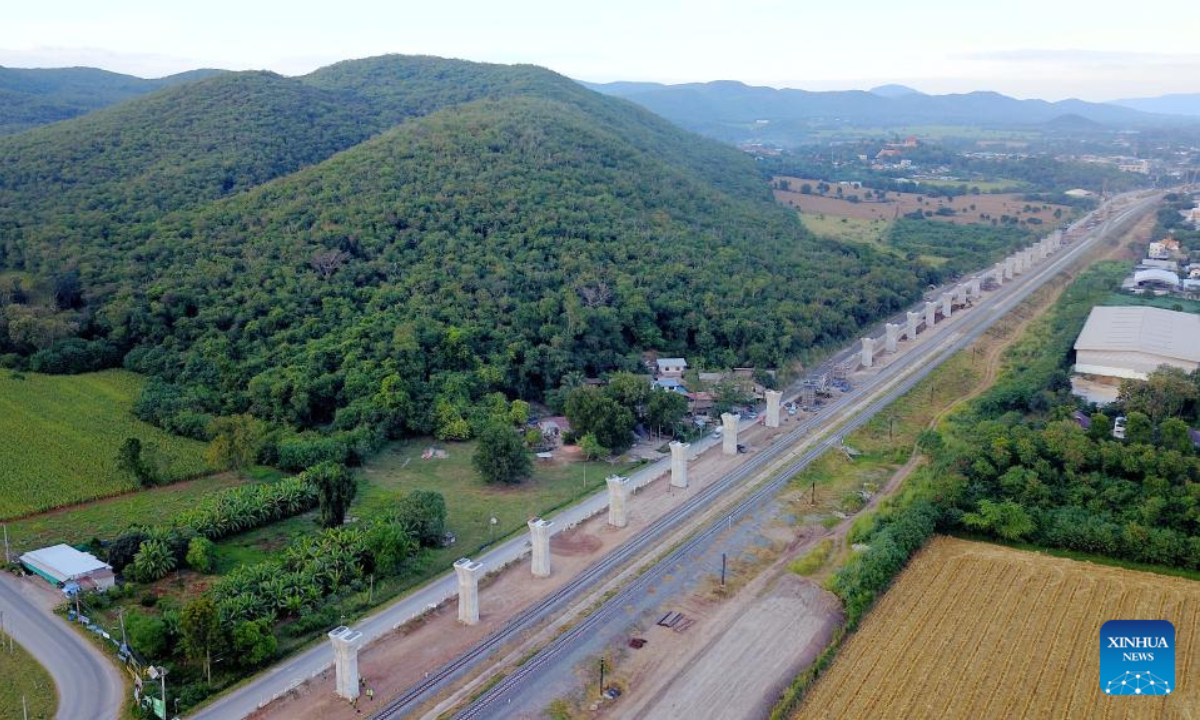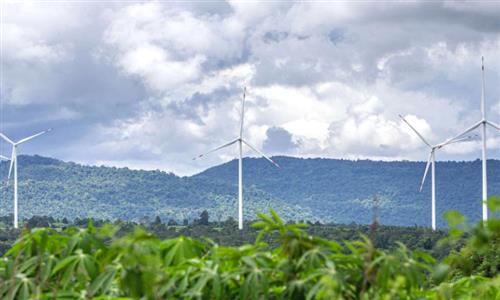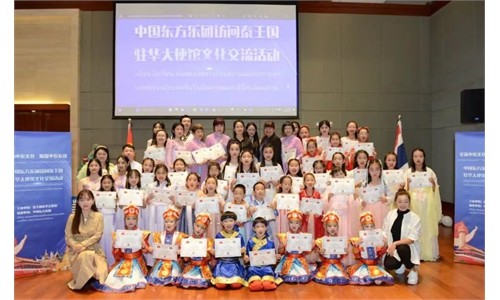
This aerial photo taken on Nov 10, 2022 shows a construction site of the China-Thailand railway in Nakhon Ratchasima province, Thailand. Photo:Xinhua
As new Thai Prime Minister Srettha Thavisin kicked off his visit to China ahead of the Third Belt and Road Forum for International Cooperation, held in Beijing from Tuesday to Wednesday, the Thai PM set his mind on wooing a Chinese rolling stock manufacturer to set up new investment in the country, where the China-Thailand railway is under construction.
Thavisin arrived in China late on Monday for his first official visit to the world's second-largest economy.
"On this visit to China, I met CRRC Group, the world's largest rail transport company. We talked about many things, especially investing in the rail transport system in Thailand. I invited the company to set up a production base for rail transportation system parts, including setting up a research and development center in Thailand along with technology transfer to continue to raise the level of and expand opportunities for Thailand's advanced industries," the Thai PM said in a post on Tuesday on the US social media platform X, formerly known as Twitter.
Sun Zhang, a railway expert from Shanghai Tongji University, applauded the intended cooperation, noting that there will be win-win results if China and Thailand foster railway technology cooperation, boosting connectivity and people-to-people exchanges.
Thailand has an important strategic position in the Indo-China Peninsula and is a competing ground for Chinese and Japanese railway technologies, with each country undertaking a stretch of railways in the country.
The China-Thailand railway will be Thailand's first standard-gauge railway. Undertaken by China State Construction Engineering Corporation, the railway is reportedly making progress. The first phase of the project, which connects Bangkok and Nakhon Ratchasima, a gateway to northeastern Thailand, has a total length of about 252.3 kilometers.
Thailand and Japan are "preparing to begin" the first-phase construction of the Bangkok-Chiang Mai high-speed rail project, according to a report by the Bangkok Post in March.
"However, as in any deal, Chinese investors will need to see what favorable terms are in the offer," the expert noted. For an investment of that size and depth, Sun believed a "really big" project is needed.
For the Jakarta-Bandung High-speed Railway, hailed as a model project under the Belt and Road Initiative (BRI), an Indonesian-Chinese consortium had a franchise to operate the railway for 50 years. The dense population on Java Island also provided a guarantee for traffic volumes for the project.
For the China-Laos Railway, maintenance of the rolling stock is conducted in existing facilities in China, cutting costs.
Over the past decade, the China-proposed BRI has attracted widespread global participation and has achieved remarkable results in connecting the world. Its infrastructure projects have helped participating countries realize their dream of shared prosperity.
East Africa now has its first trans-boundary electrified railway, the Addis Ababa-Djibouti Railway. The Budapest-Belgrade Railway has slashed the travel time between Hungary and Serbia. And the China-Laos Railway has turned land-locked Laos into a land-linked country, creating over 100,000 jobs indirectly for the country. It could raise Laos' aggregate income by 21 percent, according to China's Foreign Ministry.
Data from remote sensing satellites shows that along the China-Indochina Peninsula economic corridor, nighttime light grew by 5.57 percent during the past decade, far exceeding the global average increase of 1.3 percent.
Railway connectivity in the region is intensifying along with the successful operation of the China-Laos Railway.
On Monday, two cold-chain freight trains carrying fruit and vegetables left Southwest China's Yunnan Province for Laos and Vietnam respectively, marking the launch of international cold-chain train services on the China-Laos, China-Vietnam routes. The new cold-chain logistics services are expected to inject impetus into the common prosperity and high-level opening-up along the railway routes, according to Xinhua.



